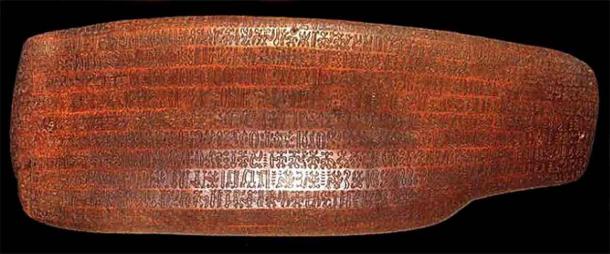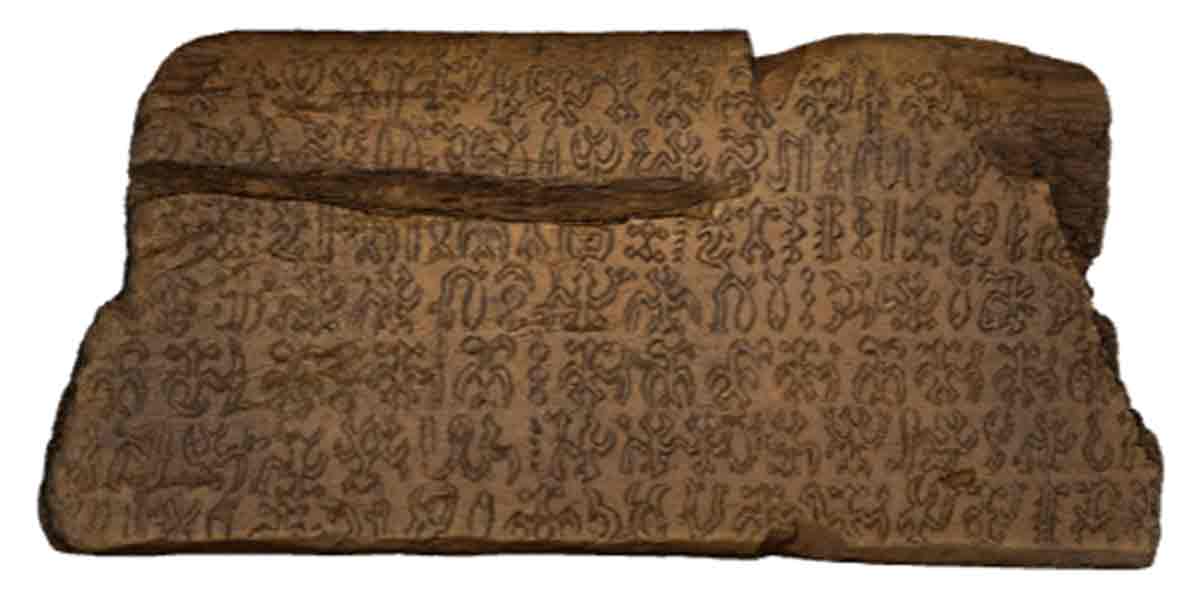Undeciphered Rongorongo Script Found on Easter Island Predates European Contact
There has long been an air of mystery and intrigue surrounding a set of wooden tablets with writing on them found on the tiny, remote South Pacific island of Rapa Nui (more commonly known as Easter Island). Since these 27 inscribed tablets were recovered by explorers in 1864, the ongoing question has been, did their written script have a truly ancient origin, one that predated the arrival of the first European colonizers in the early 18th century? Or was that script comprised of elements introduced by the Europeans, meaning the written language wouldn’t have been indigenous to the island? If the Rapa Nui written language—dubbed Rongorongo—developed independently of European influence, it would represent a rare example of a pure language being created in historical times.
Hoping to come up with answers, a team of scientists from Italy and Germany performed radiocarbon dating tests on a set of four Easter Island tablets (designated as Tablets A, B, C and D) that are currently in the custody of Catholic nuns stationed in Rome. The data obtained from these tests seems to have confirmed the pre-European origin of the Easter Island script, as one of the tablets was found to have been carved on wood harvested in the late-15th century (specifically between the years 1493 and 1509). This is strong evidence that the island’s inhabitants invented a written language long before they encountered any Europeans.
- Easter Island and the Mysteries of the Moai
- Easter Island’s Birdman Cult: A Story of Struggle and Survival

Rongorongo Tablet B, Aruku Kurenga, dates to the 19th century (Public Domain)
Three of the four tablets were made from wood dated to the 19th century. Interestingly, the wood used to make the older tablet was not actually native to Rapa Nui, but instead came from a tree that only grows in southeastern Africa. The scientists who dated it believe it likely floated to the island as driftwood, likely reaching the island a few years after that 1493 to 1509 time period.
Finding a Needle in a Haystack: A Truly Independent Written Language
From an anthropological perspective, the results of this study have extraordinary implications.
“If Tablet D's exceptional age indicates that the local population of Rapa Nui could have invented a writing system without influence or input from external agents, Rongorongo could represent one of the few independent inventions of writing in human history, adding a layer of complexity to the narrative of the cultural and historical development of the Rapa Nui inhabitants,” the scientists wrote in an article about their study just published in Scientific Reports.
While this statement is somewhat cautious in what it proclaims (i.e., using words like ‘if’ and ‘could’), the scientists do believe they’ve uncovered convincing evidence to show that the people who lived on Rapa Nui many centuries ago were both speaking and writing in their own unique language.
However, even though the scientists proved the wood of the tablet was more than 500 years old, that would not necessarily mean that the inscription on the wood tablet was made that long ago. Because wood was scarce on Rapa Nui, it was common to reuse it over and over again—and in fact the inscribed tablet had notches cut into its sides, meaning it was likely repurposed as a spool for winding up cord at some point.
- Hidden Rapa Nui: Easter Island’s Cults, Cannibals, and Cultural Connections
- Pukao Study Claims Easter Island had a Cooperative Community Not A Warrior Culture

The researchers believe the notches in the sides of the tablet, visible in the 3D freeze, were added at a later date. (© Museum Archives of the Congregazione dei Sacri Cuori di Gesu e Maria, 3D model Produced by ERC INSCRIBE Project, based at the University of Bologna)
But the scientists believe the inscribed message was added to the wood not long after it was collected. They consider it highly unlikely that the Rapa Nui people would have kept the wood around for two centuries, before finally carving an elaborate message into its surface. In fact, the existence of the notched sides suggests it was originally used as a tablet, and then reused for a more utilitarian purpose later on.
“Given the circumstances of preservation, we cannot assume a much later date of engraving than that in which the tree used for the tablet was cut,” the scientists concluded in their Scientific Reports article.
Notably, the elaborate and complicated glyphs that were used as letters in the Rapa Nui written language bear no resemblance to European letters. This in itself is enough to imply that the script was purely a Rapa Nui invention, likely dating to well before any Europeans discovered the island.
“Historically speaking, if you borrow a writing system, then you keep it as close to the original as possible," study lead author Silvia Ferrara, a philologist from the University of Bologna, said in an interview with Live Science.
Rafal Wieczorak, a chemist from the University of Warsaw who has studied other Easter Island tablets with Rongorongo writing on them, is excited about the implications of the dating results obtained by the German and Italian scientists. Namely, the implication that European contact had nothing to do with the script’s invention. But he also notes that further research will be needed to prove the case conclusively.
"This is a great development," he told Live Science. "I actually believe that Rongorongo is one of the very few independent inventions of writing in human history, like the writing of the Sumerians, the Egyptians and the Chinese. But belief is a different thing than hard data … so ideally, we would like to test all the tablets."
Mourning the Lost People and Culture of Rapa Nui
The island of Rapa Nui is located at an extremely remote location, approximately 2,400 miles (3,800 kilometers) off the coast of Chile. It was first discovered and settled by migrants from the islands of eastern Polynesia, who are believed to have arrived sometime during the first millennium AD (likely between the years 400 and 700).
This tiny dot of land in the Pacific (Rapa Nui is just 63 square miles or 164 square kilometers in size) is most famous for its massive and enigmatic megalithic stone heads, which were created by Rapa Nui native residents between the years 1400 and 1650 AD. Coincidently, this overlaps with the time period when the anomalous Tablet D was apparently carved with Rapa Nui script, raising the possibility that the script might reference the construction and placement of these sacred statues.
Presumably, the written script on the 27 wooden tablets recovered on Rapa Nui could answer many questions about the native people’s culture and society. But as of now the complex Rongorongo script of the Rapa Nui people remains undecipherable.
Tragically, the native people of Rapa Nui are no longer around to assist with the translation, because they were the victims of a genocide. Some died at the hands of European colonizers in the 18th century, the majority died from diseases introduced by the Europeans (smallpox was especially devastating), and the rest were carried off to South America by slave raiders to toil on sugar cane and rubber plantations in the 19th century.
Astonishingly, more than 400 distinct Rongorongo glyphs have been identified among the approximately 15,000 characters or letters that have survived via the tablets. Since none correspond to any known systems of writing, solving the puzzle of their true meaning may ultimately prove to be impossible.
Top image: Rongorongo Tablet D engraved with the undeciphered script. Source: (© Museum Archives of the Congregazione dei Sacri Cuori di Gesu e Maria, 3D model Produced by ERC INSCRIBE Project, based at the University of Bologna)
By Nathan Falde


















Comments
"This is strong evidence that the island’s inhabitants invented a written language long before they encountered any Europeans."
Strong evidence; yes. But not irrefutable proof. The peopling of the South Pacific is not without controversy. There is some evidence that the Maori, for example, were not the first to reach New Zealand. It has been suggested that Celts may have arrived earlier.
This is not a popular possibility. Modern anthropology is subject to the whims of politics and of religion other than Christianity. The more that this is so, the more likely I am to believe the Biblical account of the confusion of languages, rather than the status quo of corrupted anthropology.